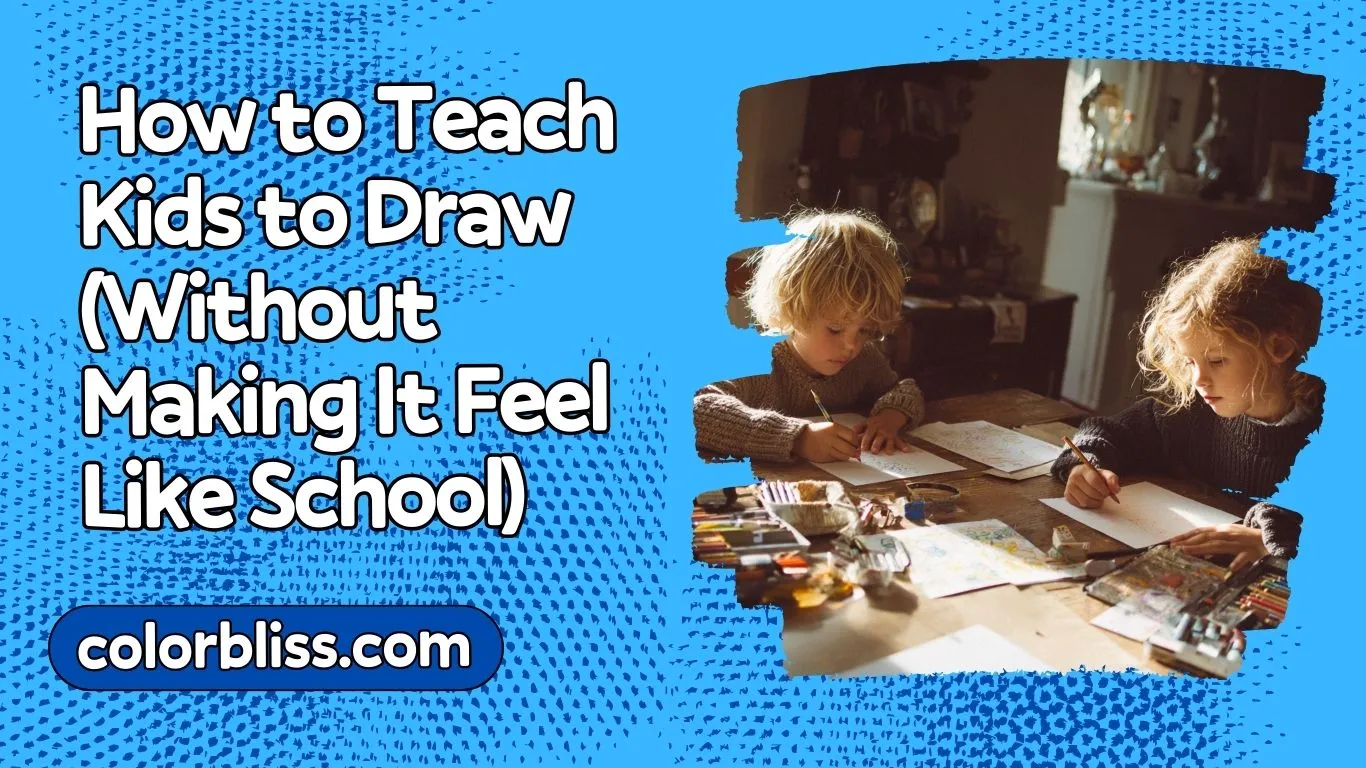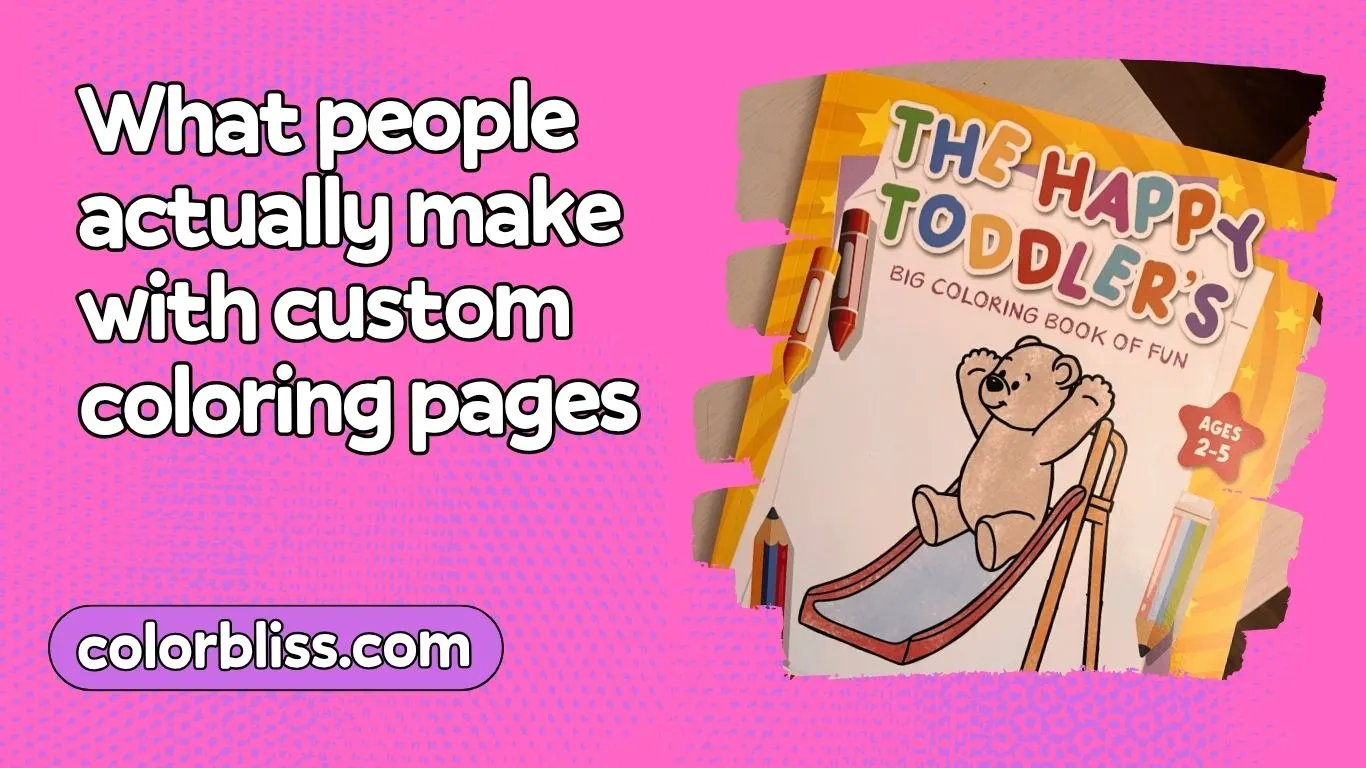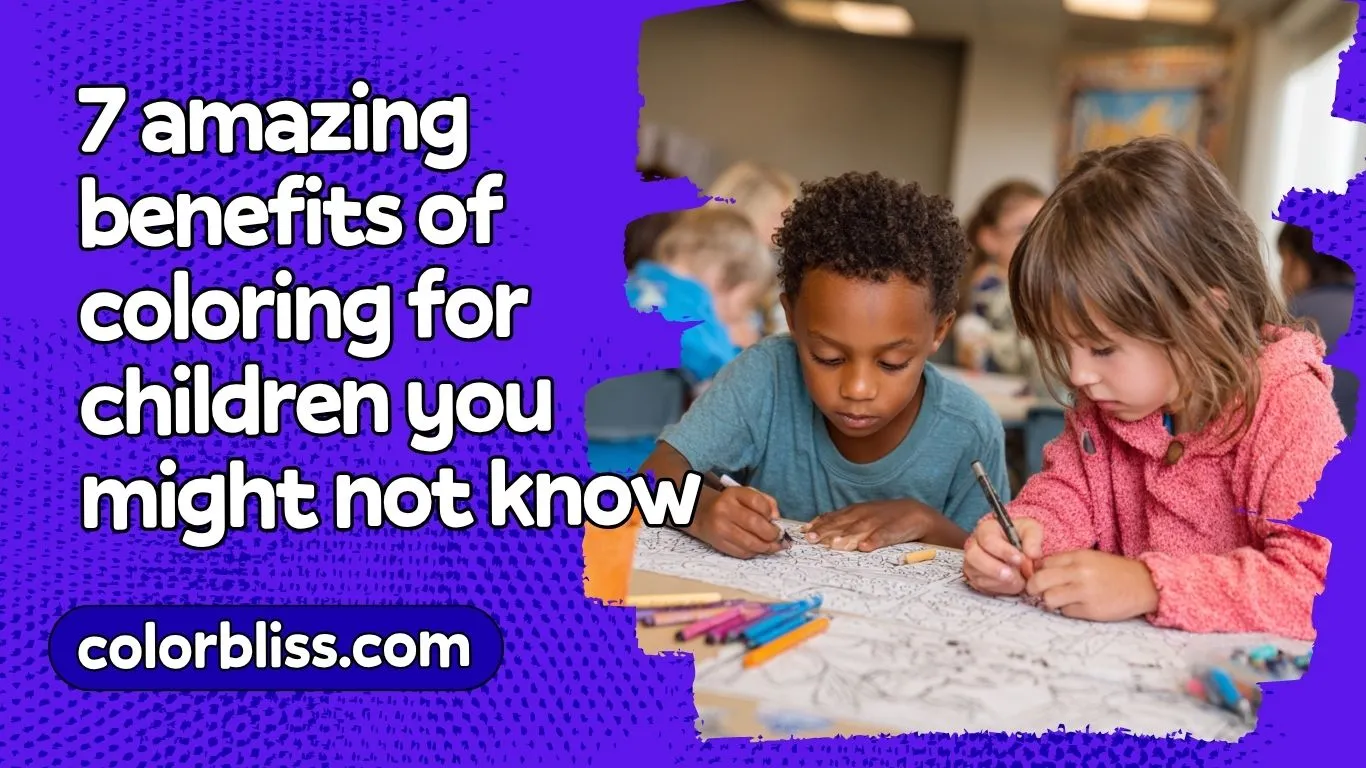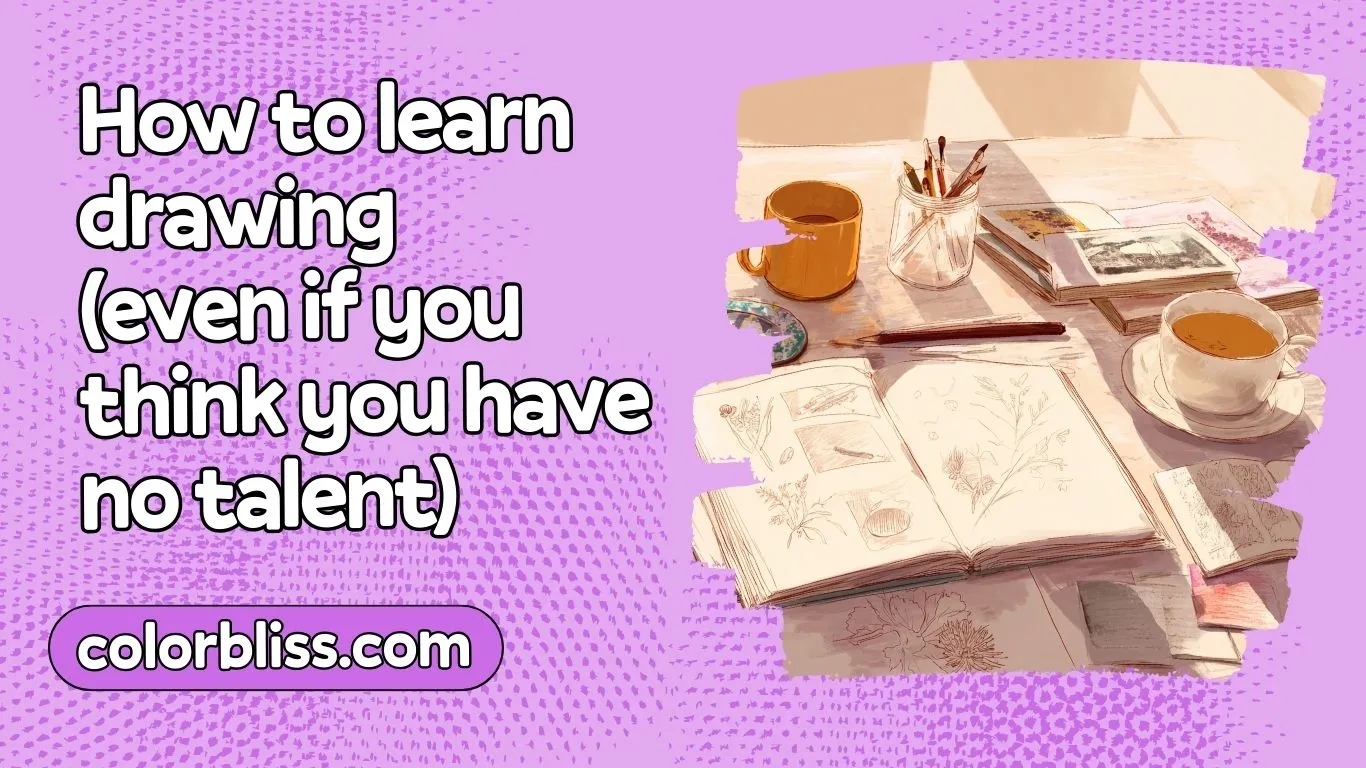Creative ways teachers are using coloring pages to engage students

Teachers have been reaching out to tell me how they use ColorBliss in their classrooms, and what I’ve learned is pretty cool. From sixth grade to high school to college, teachers are using coloring pages as a real teaching tool, not just busy work. I wanted to share these stories because they prove something important: coloring isn’t just for little kids anymore.
Using coloring pages to keep sixth grade students engaged during read aloud time
Wendy Peterson teaches sixth grade and found a smart way to use coloring during read-aloud time. When her class listens to their novel, she gives them custom coloring pages for each chapter.
Here’s how it works. She reads each chapter ahead of time, picks out the main themes and important parts, then creates coloring sheets based on those ideas. Wendy says this really helps her kinesthetic learners—kids who need to keep their hands busy to focus on what they’re hearing. The coloring keeps students paying attention to the story while giving them something physical to do, and Wendy says she enjoys making them too.
You could try something similar by creating themed printable coloring sheets for different units throughout the school year. Try space coloring pages during astronomy or sci-fi books, fall coloring pages when reading seasonal stories, or halloween coloring pages in October. Many teachers keep a collection of seasonal materials ready to use when they need them.
Coloring pages as a reflection activity for high school students
Leanne Koffskey teaches at St. Joseph’s Catholic School in Greenville, South Carolina, and she found a creative way to use coloring pages with high schoolers.
Her school picked the Good Samaritan story as their theme for the year, with a focus on Vincent van Gogh’s painting of it. Leanne created a reflection activity with different parts—games, discussions, videos, articles, and songs. She thought coloring would give students another way to think deeply about the themes.
When she couldn’t find what she wanted online, she used ColorBliss to turn van Gogh’s painting into a coloring page for the activity.
If you want to set up reflection stations, consider including different types of printable coloring sheets. Mandala patterns work well for meditation and focus, while color by number designs are good for students who like clear instructions. Both are free printable coloring pages you can match to your lesson plans.
Add creativity to document-based learning with coloring pages
Sonya Hightower-Routt teaches 8th grade US History in Houston and does something she calls “primary source mash-ups”—mixing visual learning with history analysis.
She takes famous historical images like the Boston Tea Party or the signing of the Declaration of Independence and turns them into coloring pages using ColorBliss.
(Pro tip: here’s a step-by-step guide on how to turn images to coloring pages: Turn Iconic Photos into Coloring Pages with AI)
While students color, she has them write notes directly on their pages, answering specific questions:
“What’s happening in this scene?”
“Who are the important people involved?”
“Why does this moment matter?”
This helps students learn historical content in a different way by engaging both their visual thinking and analytical skills at the same time.
You could build a collection of historical printable images organized by unit or time period. Some teachers collect themed materials for holidays like St Patricks Day, fathers day, or back to school lessons that connect to historical events. Keep colored pencils and crayons available so students can choose what works best for them.
Coloring pages can help calm and reinforce learning
Sonya has another way she uses coloring pages in what she calls “review stations” during test prep weeks.
Her most popular station is “Color & Connect,” which uses coloring pages designed to show how historical ideas connect to each other. For example, she might show the causes of the American Revolution as puzzle pieces that students color, then flip over to explain in writing how those causes relate.
Students really love these activities because they help review the material while also being calming, which reduces test anxiety.
Beyond history, you could set up similar stations with worksheets that mix traditional exercises with DIY coloring components. Try pumpkin coloring pages during October math lessons on fractions, or cupcake coloring pages when teaching proportions. Some teachers even use happy birthday themed pages when studying when historical figures were born, making the subject feel more personal.
Using coloring pages to activate both sides of the brain
Caitlyn Danka teaches Veterinary Assisting at Upper Bucks County Technical School and discovered that coloring pages help engage both sides of the brain—the logical left side and the creative right side working together.
Research backs this up. A study with fifth graders showed that when science lessons included artistic activities, students learned the material just as well as traditional teaching methods and often remembered it better over time. The arts-based approach also boosted student engagement and motivation, both crucial for lasting learning.
This approach works across all subjects. Detailed coloring helps students develop the motor skills they’ll need in their future work while supporting social emotional learning through focused, calming activity. Coloring complex diagrams requires careful attention to detail, a skill that transfers directly to other areas of school and work.
Colors can help students distinguish and remember concepts
Dawid Siuda tutors young people in AI and programming basics and found an interesting way to use color in technical education.
When teaching programming concepts, he uses color as a memory tool by giving different colors to classes, variables, and functions. This helps students tell them apart more easily and remember them better. He’s found this works well across all age groups because our brains naturally notice and remember color-based information.
This same principle works with educational coloring pages. When students engage with content both visually and through deliberately choosing colors, it can really help with memory formation and understanding across any subject.
You could use this color-coding approach in many ways: marking different parts of speech in language arts, labeling sea creatures in marine biology, or showing differences between related concepts in any subject. Some teachers also keep themed reward pages with Disney characters or superheroes to give out when students master difficult material, using positive reinforcement to keep motivation high.
Coloring pages to teach biology and build focus
A biology teacher on Reddit shared how they use coloring as a major teaching tool when covering complex topics like cell theory, anatomy, botany, and microbiology.
They keep a collection of detailed coloring books specific to biology and pull out individual pages for interactive notebooks, which helps students engage more deeply with the material. Interestingly, this teacher even used biological coloring books themselves when studying for their own teaching certification, showing the technique works for adult learners too.
You can’t color a detailed heart without spending 15–20 minutes looking closely at the parts and color-coding them. It forces you to really focus on the subject and gives students who need it a sense of accomplishment.
They also use fun coloring sheets as a sponge activity—a quick task to keep students productively busy when they finish assignments early.
If you want to try this approach, start with detailed coloring books for your subject or create custom printable coloring sheets for specific lessons. As a coloring activity, this works with any tool—crayons for simple diagrams, colored pencils for detailed work, or even pastels for older students working on shading and texture. It builds sustained focus while strengthening fine motor skills that help beyond the classroom.
The benefits of coloring for kids and students
What stands out from all these examples is a clear pattern: teachers across grade levels and subjects are realizing that coloring serves as more than just a time-filler. Some use coloring pages to keep students engaged during read-alouds, others to help students reflect on complex themes, and still others to help students develop the focus needed for detailed content in history, science, or technical programs.
These teachers have identified several key benefits that coloring brings to learning. Coloring pages can create a calmer classroom environment, help students concentrate on difficult material, and improve how well students remember information over time—which is really the whole goal of teaching.
The benefits of coloring go beyond just stress relief or entertainment. Because coloring pages provide a hands-on activity to process information—whether students are using crayons, colored pencils, or pastels—it can help kids who struggle with sustained attention direct their energy productively and make meaningful connections with what they’re learning.
If you want to try any of these teaching strategies in your classroom, check out our coloring page generator and image-to-coloring-page converters at ColorBliss. We have resources for practically any classroom need—halloween coloring pages for seasonal activities, mother’s day and valentine’s day cards for social-emotional learning lessons, cupcake coloring pages for math instruction on fractions and proportions, and tools to turn paper crafts into colorable templates for cross-subject projects.



